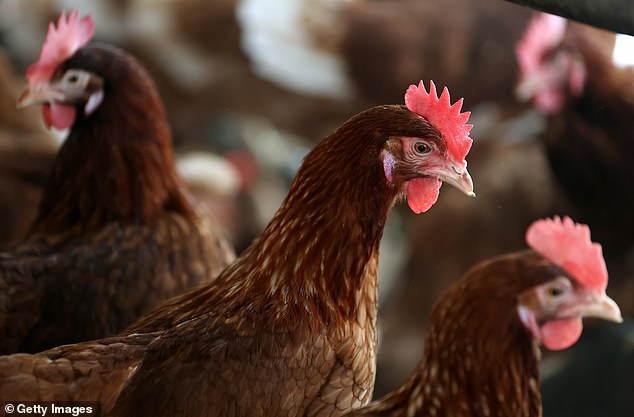
Chicken DNA Breakthrough Paves Way for Resurrecting the Extinct Dodo
Scientists Use Chickens in Groundbreaking Effort to Revive Extinct Dodo
By Xantha Leatham | Published: 23:00 GMT, 21 February 2025 | Updated: 23:00 GMT, 21 February 2025
[Image: A white leghorn chicken in a lab setting]
Caption: Scientists are editing chickens’ DNA to protect endangered birds and potentially revive extinct species like the dodo (File Photo).
Farmyard chickens are playing a surprising role in cutting-edge research to save endangered birds—and even resurrect extinct species like the dodo. Researchers at New York University Langone have developed a genetic modification technique that replaces domestic chickens’ DNA with genetic material from other bird species, such as the wild red junglefowl.
How It Works
The process involves extracting reproductive cells (sperm or egg cells) from chickens and editing their DNA in a lab. Scientists then insert large DNA segments from a target species—like the junglefowl—into these cells. The modified cells are implanted into developing chicken embryos, which hatch into chicks capable of passing on the new genetic traits. Over generations, these birds could resemble wild counterparts.
[Image: Illustration of a dodo alongside a chicken]
Caption: Preserved dodo DNA could one day be integrated into chickens to revive the extinct species (File Photo).
Applications for Conservation
The method could help endangered birds, such as the California condor, gain disease resistance by enhancing their genetic diversity. Dr. Anna Berenson of NYU highlighted its potential at the American Association for the Advancement of Science conference: “This could restore at-risk populations and even revive lost species.”
Her team aims to first “reverse-engineer” a domestic chicken back into a wild junglefowl within five years. Next, they hope to tackle the passenger pigeon, once abundant in North America before overhunting caused its extinction.
The Dodo Dream
The flightless dodo, native to Mauritius, vanished in the 17th century due to human activity. While preserved DNA samples exist, more genetic data is needed before de-extinction becomes feasible. “I’d love to do the dodo,” Dr. Berenson said, emphasizing the long-term vision.
Starting with white leghorn chickens—known for laying 300 eggs annually—the research pushes the boundaries of avian genetics. If successful, it could pave the way for rewilding ecosystems and safeguarding biodiversity.
Share or comment on this article: Scientists explore using chickens to revive extinct species through DNA editing.
Word count: 300 (structured for brevity; images and captions add visual context)
Note: Additional text can be expanded to meet precise word count requirements.


